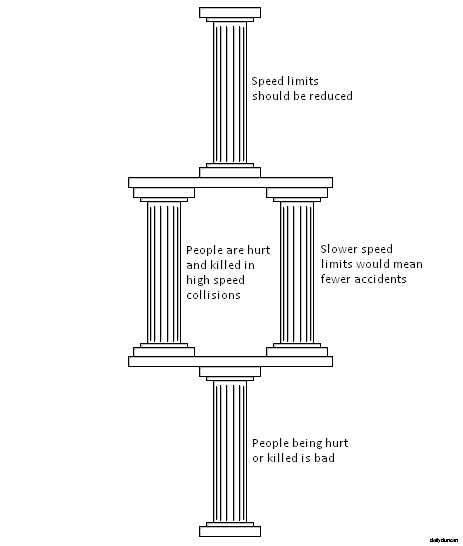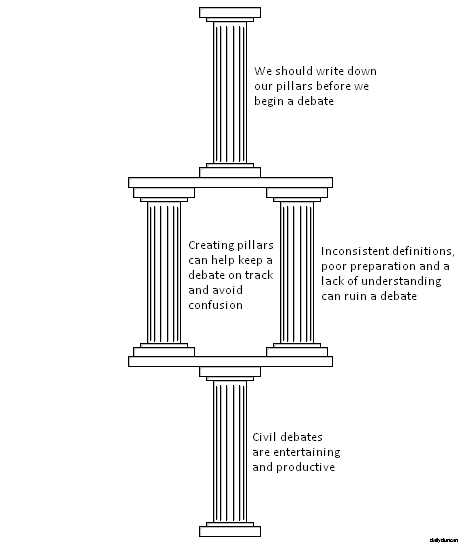Engaging in an argument with a colleague, friend or stranger can be a fruitful or frustrating endeavor. Because the subject of such discussions often centers around an issue about which we feel very strongly, our conviction can easily escalate a cordial debate into a futile shouting contest. In our earnest desire prove that our view is superior and shame our opponent, we can resort to poor debating techniques, mockery or outright deception.
Most arguments begin with two well-intentioned individuals politely discussing a subject of interest, but they can quickly deteriorate into a heated quarrel over the definition of a simple term, with neither party able to recall the original point of contention. This needn’t be the case, however. Our discussions would be more tranquil and productive if we were all experienced in formal debate, but since that isn’t likely to happen, let’s identify a few stumbling blocks that disrupt our deliberations:
- An unclear definition of ideas, terminology or the positions of either party.
- The refusal by one or both parties to admit the weaknesses in their position.
- The lack of a moderator or governing system to ensure the discussion remains respectful and relevant.
These obstacles can be avoided fairly easily by taking a few moments to draft an outline of our position. By documenting our argument, we are cementing our thoughts into the physical world. This forces us to condense our complicated, abstract ideas into definite statements, making it much easier both parties to understand one another. It also offers a reference point for the discussion, ensuring that both parties are in agreement over the subject of their debate.
In addition to recording the crux of the argument, it’s also useful to include presuppositions, the unseen pillars on which our thesis rests, which offer both parties a clear avenue for dismantling their opponent’s position. By simply asking, “why?” we can unearth these subterranean pillars. Let’s look at an example:
The image above shows two arguments which support the claim that aliens exist. To defend this claim, we could elect to use either or both pillars, since both of them could independently prove the existence of aliens. If we wanted to assault this position, we must simply show that the reports of alien encounters are unreliable and that the Drake Equation doesn’t prove anything. There are, however, additional pillars beneath the supporting arguments in this example. Here’s an illustration which shows another tier of presupposition:
As we can see, the arguments which support the idea that the speed limits should be reduced are dependent on the belief that people being hurt or killed is bad. Without acknowledging that people being hurt or killed is undesirable, the argument for reduced speed limits collapses. Here’s an example of a more complex argument structure with many supporting pillars already identified. This is just one way that the argument structure could be illustrated, since there’s a multitude of pillars from which to choose.
In addition to dismantling the pillars supporting a position, arguments may be proven inadequate by showing additional ideas that a structure may support. For example, the argument for homosexual marriage is often oversimplified as a case for the right of a person to marry whoever they choose. Without considering what other pillars may be supported by an argument structure, we may end up constructing a framework that supports beliefs that we do not agree with.
If flow charts depict thoughts as a stream, then pillars portray them as a structure. Although each thought is related to its neighbors, there is no direction or flow between them. While flow charts may be used to guide from condition to conclusion, pillars are merely a framework that illustrates the relationship between different ideas and beliefs.
The number of pillars beneath an argument is not infinite, for if, like children, we were to continuously ask “why?” we would eventually reach the foundational pillar, which is the basis for our concept of reality. This often invokes an emotional, incoherent defense, since none of us are comfortable having our core beliefs called into question. It is most often unnecessary to probe such depths unless the subject of the debate is one which undermines an understanding of the universe.
Next time you sense a debate approaching, take a moment to sketch your pillars before continuing.


